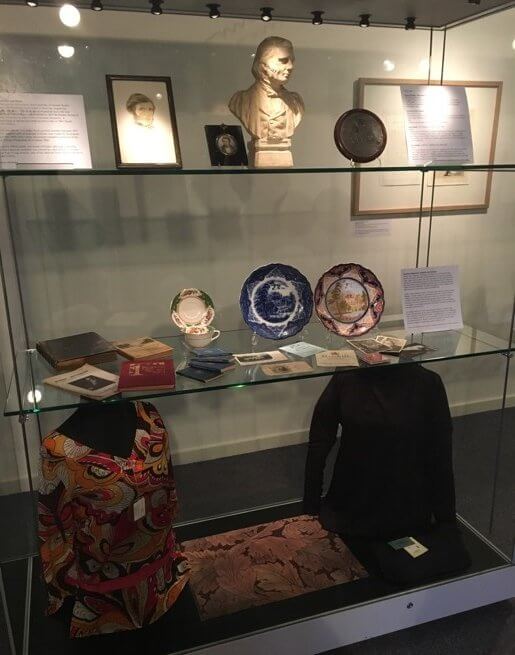This year marks the 200th anniversary of the birth of the visionary thinker, John Ruskin (1819-1900). To coincide with this anniversary, this exhibition aims to celebrate Ruskin’s relationship with Manchester and the City’s responses to him. It explores his connections to the Manchester Art School, the Manchester Art Treasures exhibition and the Manchester Public Library. The exhibition has been curated by Dr Rachel Dickinson, principal Lecturer in the Department of Interdisciplinary Studies at Manchester Metropolitan University.
As my PhD research explores the reception of medieval architecture during the long nineteenth, I believed I was relatively familiar with John Ruskin and his work. Ruskin produced a three-volume treatise on the extreme fragility of Venetian Gothic architecture, ferociously condemned the Gothic Revival architect Augustus Welby Northmore Pugin and celebrated the value of good craftsmanship. However, I knew little about Ruskin’s relationship with the City of Manchester and greatly wished to discover more. The title of the exhibition first sparked my interest in the exhibition, as I wondered why Ruskin might have described Manchester so negatively and how the City responded to him. Today, Manchester is commonly perceived as a vibrant multicultural City with hundreds of trendy cafes and eco-friendly vintage clothes shops. I therefore quickly scanned the entrance exhibition board to uncover the motivations behind Ruskin’s strong assessment.
To summarise, Ruskin hated the City of Manchester. The board described how Ruskin loathed Manchester, as it represented what was most wrong with the nineteenth century. Ruskin could see the City’s pollution from his home in the Lake District and he condemned the horrendous working conditions in the local factories. The ‘devils’ darkness’ comment was therefore in reference to the City’s dirty smoky factory smog and it caused outrage among his contemporaries. Given the City’s improving image and reputation, I couldn’t help but wonder how Ruskin would perceive Manchester today. Would he celebrate or condemn the City? It is an intriguing thought!
Stepping into the exhibition room, which was situated in the Manchester Metropolitans Special Collections Library, I was greeted by the sight of traditional museum glass cabinets. Ruskin’s clothes, books, and miniature portraits were proudly displayed inside and enticed me forward. I was immediately keen to examine one long horizontal exhibition board positioned on the wall, as it was titled ‘Ruskin Speaks to Manchester’. As the foremost art critic of the century, Ruskin was invited to give lectures in the Manchester Art School during the mid-nineteenth century. Instead of giving audience members a conventional art lecture, I learnt that Ruskin often attacked the City’s uncaring laissez-faire capitalism. I was impressed by the honesty of this exhibition board, as it willingly portrayed Manchester’s local people in a negative light.
One item that I gravitated towards was a striking blue book with beautiful gold lettering. Peering closer at the exhibition tags, I was amazed to read that it was a children’s book. Published in 1851, The king of the Golden River became an early Victorian classic which sold out in three editions. The fairy tale story centres around three young brothers and their quest to find the source of the Golden River. Ruskin wrote this piece in 1841, in response to a request made by a 13-year-old Euphemia Gray. Although this exhibition primarily focused on Ruskin’s relationship with the City of Manchester, it was fascinating to read about Pugin’s other interests. Overall, I found this exhibition to be well structured and interesting. I gained greater understanding into Ruskin’s relationship with the City of Manchester and found myself intrigued by the historic material which had clearly been carefully selected for diverse audiences. You don’t have to be well acquainted with Ruskin’s work to enjoy this exhibition, as it also offers fascinating insight into Manchester’s industrial past, prominent figures and historic landmarks. If you are passing the Oxford Road area, I strongly recommend that you pop into the exhibition!


